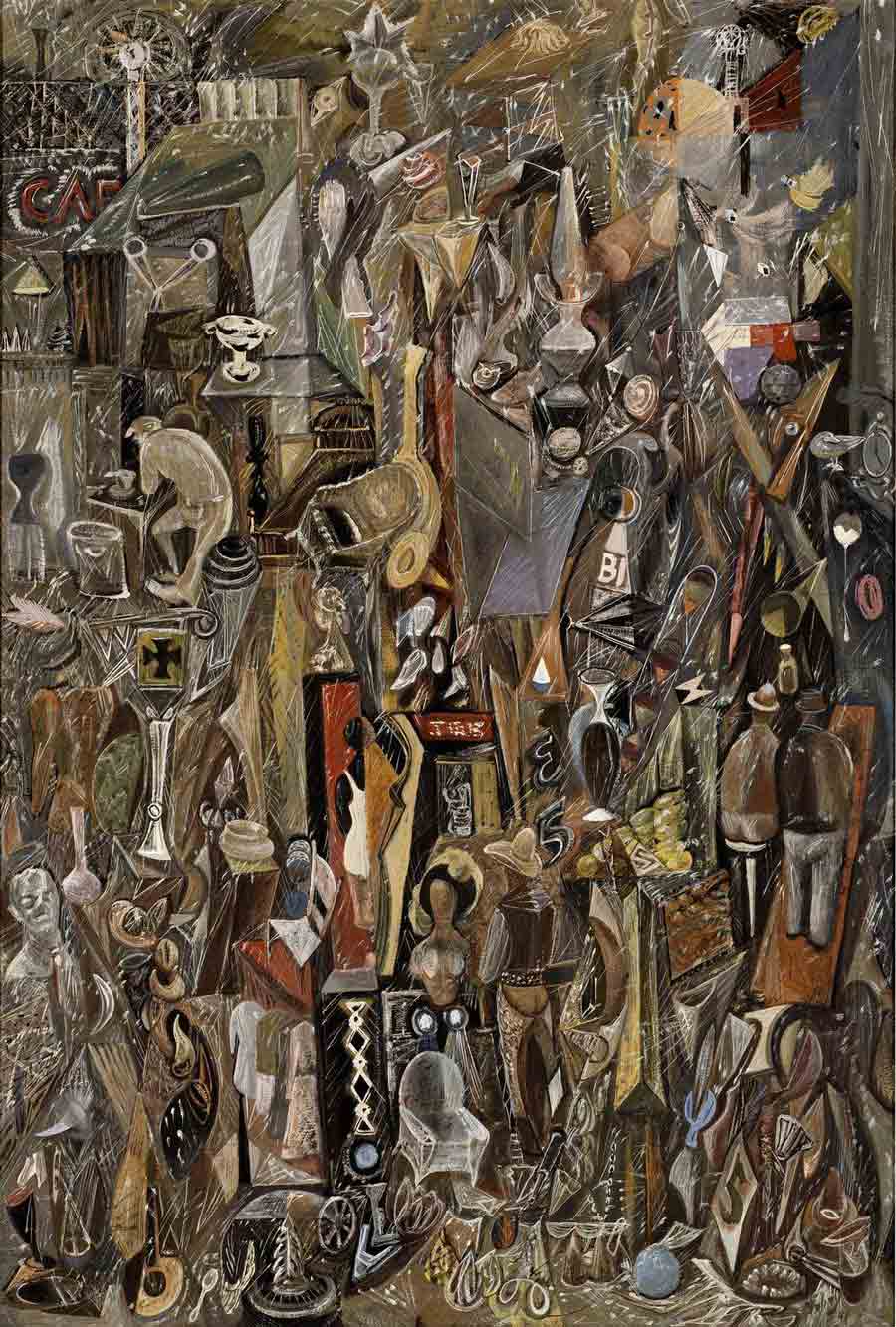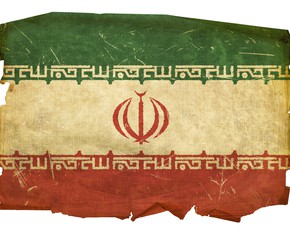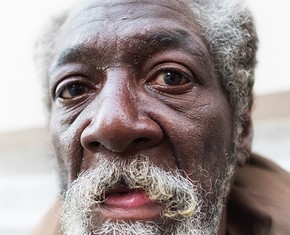The views expressed in our content reflect individual perspectives and do not represent the authoritative views of the Baha'i Faith.
The American painter Mark Tobey, always very open about his faith and its influence on his work, called the Baha’i teachings “the living core of … Modernism.”
In the early 1930’s Tobey became friends with the South African painter Reginald Turvey and the British potter Bernard Leach, who quickly learned of Tobey’s faith, and soon became Baha’is themselves. Throughout the following decade, Tobey continued to travel, work extensively in countries such as England, Mexico and the Orient, and share the relationship between his work and the Baha’i Faith.
One notable trip for Tobey included the time he spent at a Zen monastery outside of Kyoto, Japan, where he studied Buddhism, Asian philosophy and art in 1934. Reflecting on his time at the monastery and its influence on his work, Tobey said:
As to the content of my work, well in spite of the comments regarding my interest in Zen, it has never been as deep as my interest in the Baha’i Faith. The need of a unifying idea is so clearly stated in the writings of its founder, Baha’u’llah, and so necessary as an explanation of our age with its new horizons for all men and its relative dangers from men of our age, it would seem to me to be the living core of what I could term Modernism. – Mark Tobey, conversation with Arthur L. Dahl, 1962.
The following year, Tobey began to exhibit the early stages of his signature white gestural strokes set against dark contrasting backgrounds, a style which he named “white writing.” These collections of light-colored abstract, almost calligraphic symbols made up of interwoven brush strokes overlaying a dense background, gave rise to a method of “all-over” painting that later inspired and heavily influenced many notable abstract expressionist artists in the mid-century, including Jackson Pollock and Morris Graves.
Asian influences and his belief in the Baha’i Faith inspired Tobey’s use of dimension, space and mobility in his artistic work. Revealing a sense of serenity through his abstract compositions, Tobey balanced opposing forces against dark, contrasting backgrounds, revealing his attraction to Eastern art, Zen spiritual practices, Chinese calligraphy and the spiritual and religious unity so prominent in the Baha’i teachings:
The Sun of Truth is the Word of God, upon which depends the training of the people of the country of thought. It is the Spirit of Reality and the Water of Life. All things owe their existence to it. Its manifestation is ever according to the capacity and coloring of the mirror through which it may reflect. For example: Its Light, when cast upon the mirrors of the wise, gives expression to wisdom; when reflected from the minds of artists it produces manifestations of new and beautiful arts; and when it shines through the minds of students it reveals knowledge and unfolds mysteries. – Baha’u’llah, Baha’i Scriptures, p. 156.
Tobey’s deep faith manifested itself in the themes, practice and techniques he employed in his work. While his compositions were often visibly comprised of overlaying parts that spanned his entire canvas, Tobey would often translate his works into representations of the principles of oneness and unity, articulating the intersection of his lines as the visual manifestation of the interconnection between humans and the universe. Regarding the influence of Baha’u’llah’s teachings on his work, Tobey once remarked:
Where is our Oneness so eagerly offered us by Baha’u’llah for our growth and advancement, if we neglect to meditate and to attempt to relate ourselves—not only through action but by our very lives … [to] the fourfold plan of our very being which manifests in the outer, through form and action and within us, as attitude and thought. – Mark Tobey, “One Spirit,” cited in Mark Tobey / Art and Belief, by Arthur L. Dahl and others, p. 44.
Rooted in his Baha’i beliefs, Toby remained fascinated with the spiritual and how it might be manifested on canvas. Tobey wanted his audience to focus on the unity represented in his compositions, rather than witnessing their division. He wanted them to reflect on the idea that humanity is one human family, and that all the world’s religions are part of a single prophetic cycle. Being a Baha’i gave Tobey’s art a spiritual context, as well as the language that he needed to express the philosophy of his work.
Tobey, fascinated by the Baha’i teachings on the equality between science and religion, once said that:
The root of all religions, from the Baha’i point of view, is based on the theory that man will gradually come to understand the unity of the world and the oneness of mankind. It teaches that all the prophets are one–that science and religion are the two great powers which must be balanced if man is to become mature. I feel my work has been influence by these beliefs. I’ve tried to decentralize and interpenetrate so that all parts of a painting are of related value … Mine are the Orient, the Occident, science, religion, cities, space, and writing a picture. – Mark Tobey, quoted by Barbara Hess in Abstract Expressionism, p. 60.

Rummage (1941) by Mark Tobey
Throughout his life Tobey continued to teach in art schools and showcase his signature works in America and Europe, while experimenting with other styles and mediums, including music. He studied piano and music theory, which impacted and inspired his approach to movement and composition, and which also inspired the American composer John Cage.
In the last two decades of his life, Tobey became an integral and prominent artistic figure, both in America and throughout the world. In 1958, Tobey showed at the Venice Biennale where he won the prestigious International Grand Prize—the first American to do so since James Abbot McNeill Whistler in 1895.
During this period Tobey worked as a guest critic at Yale University, received a Guggenheim International Award, and also had a solo exhibition at the Whitney Museum, which ended up traveling throughout the country, gaining him much notoriety and praise. In 1961, he had a retrospective of his work at the Louvre in Paris (rare for any living foreign artist), followed by exhibitions at the New York Museum of Modern Art in 1962. In 1974, his work featured in a show at the National Collection of Fine Arts in Washington, as part of the Smithsonian Institute.
Throughout his life, Tobey struggled with how to divide his time between his art and service to his Faith. Despite this, he continued to give talks on the Baha’i Faith at every opportunity. He would often bring up the Baha’i Faith in his public lectures, talks, articles and reviews, taking advantage of every moment to share the origins and inspirations behind his work and philosophy. In 1960, Tobey moved to Basel, Switzerland with his partner the Swedish scholar Pehr Hallsten, where Tobey lived for the rest of his life, until he passed away there in 1976. In his obituary, John Russell of the New York Times wrote:
For most of his life, Mr. Tobey was an adherent of the Baha’i world faith. The so-called white‐tone paintings for which he eventually became famous were an attempt to penetrate beyond the perceptions of everyday: to give visible form, one might say, to the music of the universe. – April 25, 1976.
Today, exhibitions of his influential work still circulate. In 2017, Tobey was honored in a major exhibit in Venice, Italy, where his contributions to contemporary art were commemorated at the famous Biennale. Four of his signed works can also be found today in the reception hall of the Seat of the Universal House of Justice, the democratically-elected global leadership body of the Baha’i Faith.
















Comments
Sign in or create an account
Continue with Googleor